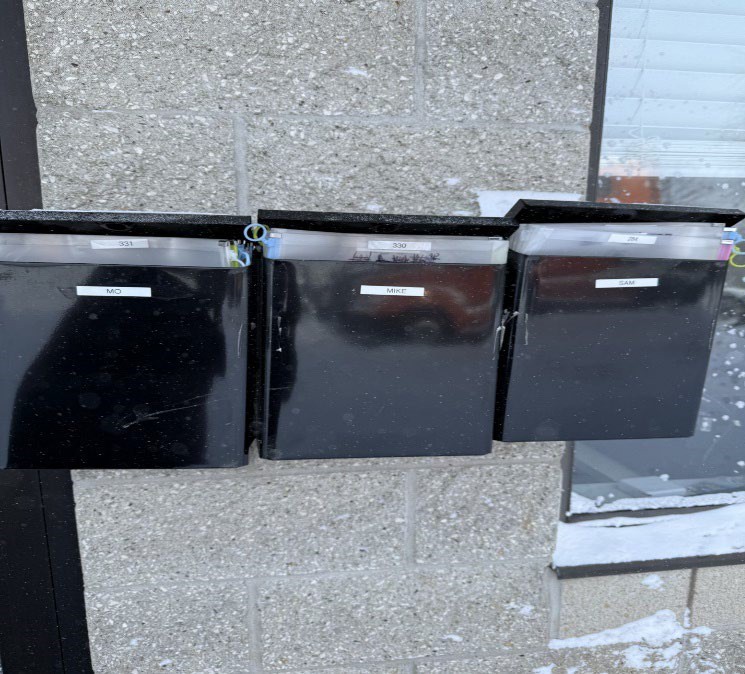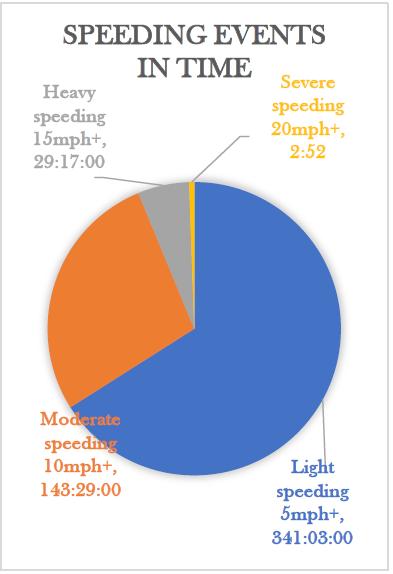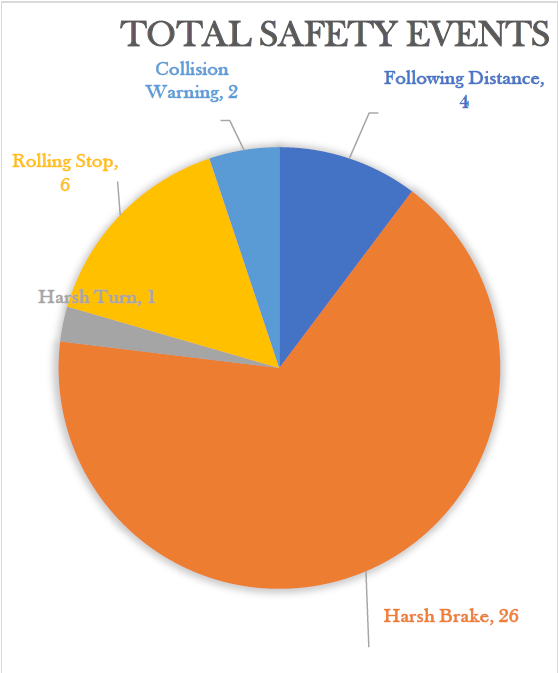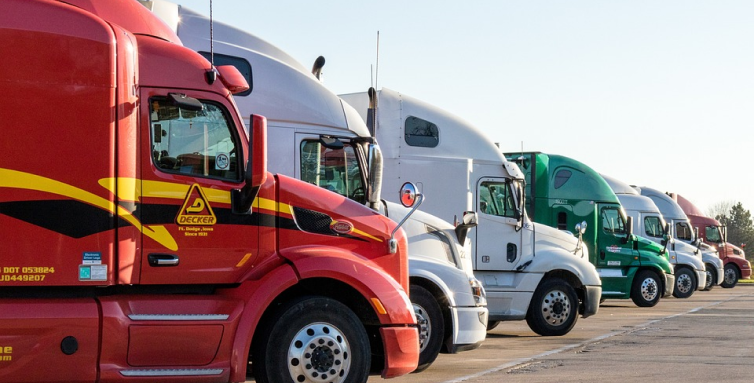Liberty Transit, LLC

- Winifred Travis
- February 11, 2025
- 0 Comments
Attention Drivers
To ensure smooth processing and record-keeping, please place all bills of lading (BOLs) and paperwork in your dispatcher’s mailbox and the folder for your assigned truck number at the end of each trip.
This helps us stay organized, process paperwork efficiently, and avoid any delays. If you have any questions, please reach out to your dispatcher.
Thank you for your cooperation and for keeping Liberty Transit running smoothly!
New Location Info
Starting in 2025, Liberty Transit LLC has secured a new trailer parking space at 1520 Steele Ave SW, Grand Rapids, MI 49507, to better accommodate our operations in Michigan. OTR Drivers dropping loaded trailers to this location must drop them at the back of the building, while preloaded trailers for outbound trips will be positioned at the front of the building for pickup. Empty trailers should be thoroughly cleaned out before being dropped off on the side of the building. Please note that only empty trailers can be placed on the side due to the soft ground conditions, which could lead to sinking under heavier loads. Strict adherence to these guidelines will ensure smooth and efficient use of the facility.

Proper Handling of BOLs – Accuracy & Timely Payment Matter!
Attention drivers! Proper management of Bills of Lading (BOLs) is essential for ensuring timely payments, smooth operations, and proper detention requests. It also helps Henk stay on top of everything, keeping our operations running efficiently and allowing us to fully service our customers. Please follow these key steps:
Keep BOLs Clear – Do not cover any part of the BOL with stickers, receipts, tickets, or other documents. Every detail must remain visible.
Complete BOL Scanning – When scanning BOLs, ensure the entire page is captured clearly so all information is legible and complete.
Verify Signatures – Always check that the BOL is signed by both the shipper and the consignee. Missing signatures can lead to payment delays and unnecessary back- and-forth.
Record In & Out Times – For detention requests, you must write your in & out times by hand on the BOL at the receiver or shipper. This documentation is required for approval and ensures we receive the compensation we’re owed.
By following these steps, we can prevent delays, keep payments on schedule, and allow Henk to manage operations smoothly. This helps us better serve our customers and keep freight moving efficiently. Let’s stay on top of our paperwork and keep things running like a well-oiled machine!
Fuel Smart & Keep It Clean!
Fueling Reminder: All drivers must fuel only at Pilot and Flying J locations. Any fuel purchased at other locations will result in a $10.00 charge per transaction to the driver. Please plan accordingly to take advantage of our fuel savings and keep operating costs low. Every dollar saved on fuel helps us run more efficiently and keeps more money in everyone’s pocket!
Keep Trucks & Trailers Clean: A clean truck and trailer don’t just look good—they represent professionalism, improve safety, and help maintain our equipment. Keeping your rig clean prevents rust, ensures better visibility, and helps avoid DOT violations. Plus, a well-maintained truck shows customers and inspectors that we take pride in our fleet and operate at the highest standards.
Let’s fuel smart, keep our equipment in top shape, and continue running strong!
True success is built on leadership that inspires, excellence that never settles, resilience that overcomes every challenge, and teamwork that drives us forward together.
Safety Culture
Safety is the backbone of our success at Liberty Transit LLC. Every mile we travel, every load we haul, and every stop we make must prioritize the well-being of our drivers, our equipment, and the communities we serve.
Safety Measures to follow:
Pre-Trip & Post-Trip Inspections – A thorough check before and after every trip helps prevent breakdowns and ensures compliance.
Speed & Distance Awareness – Maintaining safe speeds and proper following distances reduces the risk of accidents, especially in winter conditions.
ELD Compliance – Strict adherence to Hours of Service (HOS) rules keeps drivers well-rested and safe on the road.
Load Securement – Properly securing freight prevents shifting, protecting both cargo and drivers.
Defensive Driving – Always anticipate the unexpected and stay alert to avoid hazards.
We all play a role in ensuring that safety remains a top priority. By following these measures, we not only protect ourselves but also maintain our reputation as a reliable and responsible carrier.
Thank you for your dedication to safety. If you have any questions or suggestions on improving safety protocols, please reach out.

Shoutout to Arif Kavara, Dwuann Davis, David Gibson, Andrew “Drew” Johnson, Douglas Kizer, Suad Kevro, and Edward Bussie for an outstanding job behind the wheel! 7 out of 31 drivers
Your commitment to safety and professionalism is evident, as none of you had any heavy or severe speeding events in January
Thank you for leading by example and demonstrating what safe driving looks like.
Keep up the great work!

Outstanding Job, Team!
A huge shoutout to Arif Kavara, Dwuan Davis, David Gibson, Andrew “Drew” Johnson, Douglas Kizer, Suad Kevro, Moses Briggs, Alexis Maye, Joseph Guidry, Shawn Vansplinter, Geuris “Rooky” Esquea, Kendra Clark, Addeury Marmol, and Josue Moran for maintaining zero harsh turns, rolling stops, collision warnings, following distance alerts, and harsh braking events!
Your dedication to safe, smooth, and professional driving is truly commendable. By staying alert, maintaining safe distances, and following proper braking and turning techniques, you’re not only protecting yourselves but also keeping our roads safer for everyone.
Thank you for your hard work and professionalism!
We want to keep heavy and severe speeding events at zero to ensure safe and efficient operations on the road. Here’s what the current speeding data tells us:
- Light speeding (351 hours, 3 min) – This indicates time spent slightly over the speed limit but still within a reasonable range. While it may not seem like a big issue, consistently driving above the limit can add up over time and increase fuel
- Moderate speeding (143 hours, 29 min) – This shows time spent at a more noticeable speed over the limit, which increases the risk of accidents, puts extra strain on the truck’s engine and brakes, and may result in violations.
- Heavy speeding (29 hours, 17 min) – This represents significant speeding, where the truck is moving well above safe At this level, stopping distances increase, tire wear accelerates, and the chances of losing control in an emergency rise.
- Severe speeding (2 hours, 52 min) – This is the most serious category, indicating dangerously high speeds that pose a major risk to safety. Severe speeding greatly increases the chances of accidents, equipment damage, and costly citations.
Let’s work together to minimize these numbers, focus on safe driving habits, and keep both our drivers and equipment in top shape!
We want to keep these events at zero to ensure safe and smooth operations on the road. Here’s what each of these events means at Liberty:
- Harsh braking (26) – This indicates instances where the brakes were applied suddenly and forcefully, which could be due to unexpected obstacles, following too closely, or not anticipating traffic slowdowns. Frequent harsh braking can increase wear on the truck’s braking system and create safety risks.
- Harsh turn (1) – This means a turn was taken too sharply or at a high speed, which can be dangerous, especially with a fully loaded Hard turns increase the risk of rollovers and shifting cargo.
- Rolling stops (6) – This suggests that the vehicle did not come to a full stop at designated stop signs or intersections. Not fully stopping can be risky in high-traffic areas and may result in violations.
- Collision warning (2) – This occurs when the truck’s safety system detects a potential impact with another vehicle or object. These warnings should be taken seriously, as they indicate moments when braking or evasive action was needed to avoid a crash.
- Following distance (4) – This indicates that the truck was too close to the vehicle ahead for a safe stopping distance. Maintaining proper following distance is crucial, especially at highway speeds, to prevent rear-end
By staying mindful of these events and working to minimize them, we can all contribute to a safer, more efficient driving experience. Let’s keep up the good work and aim for zero across the board!
